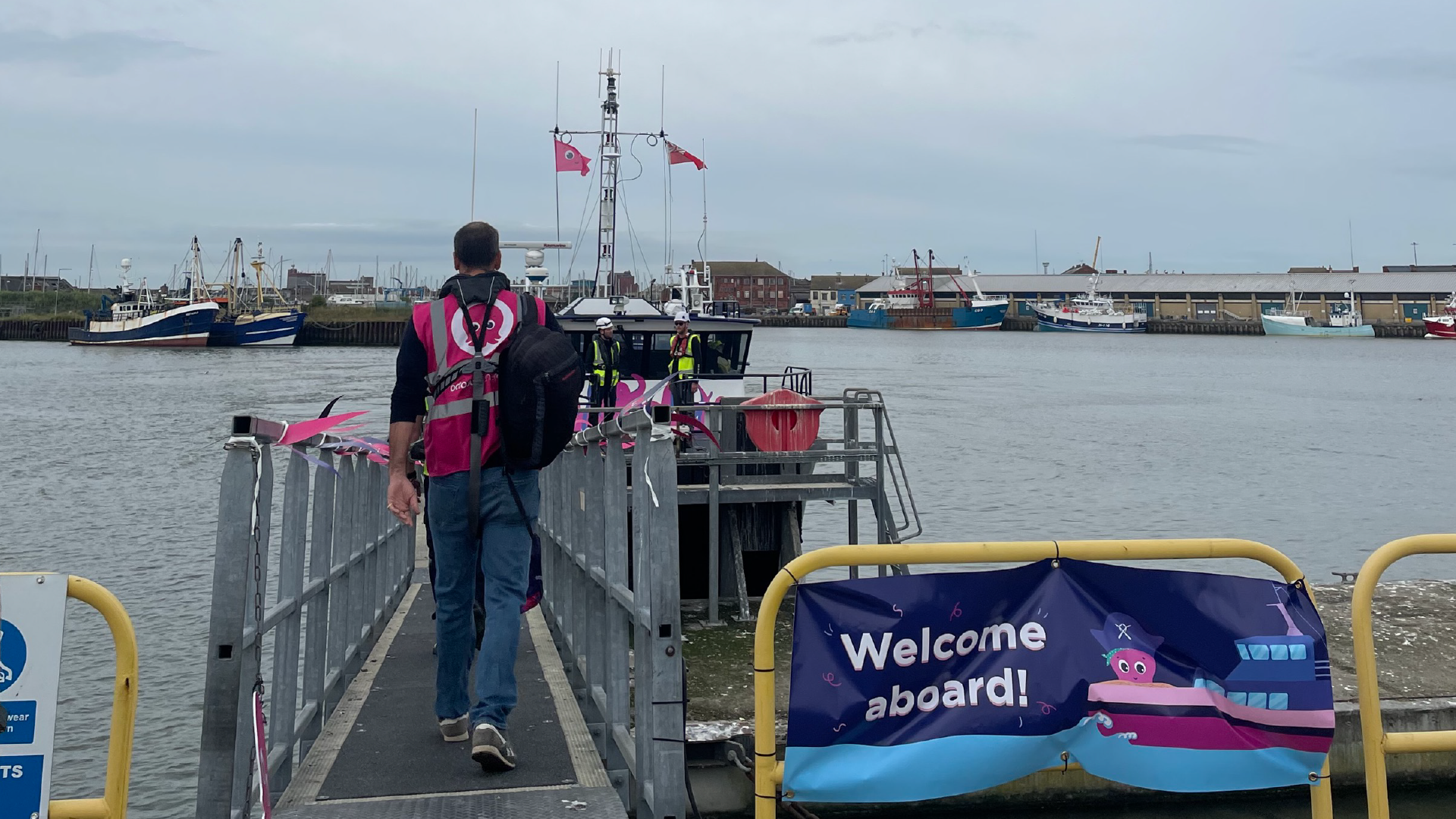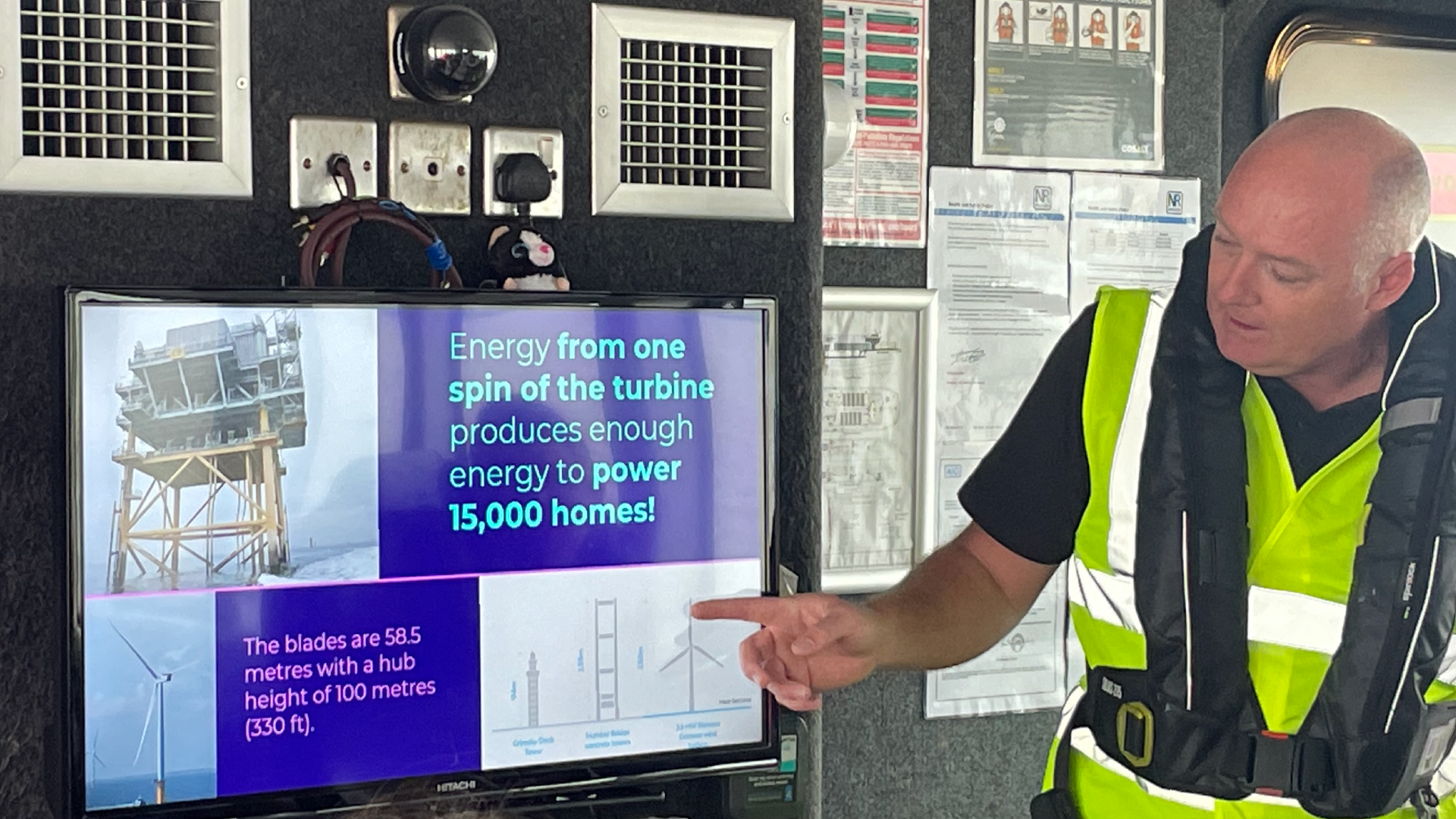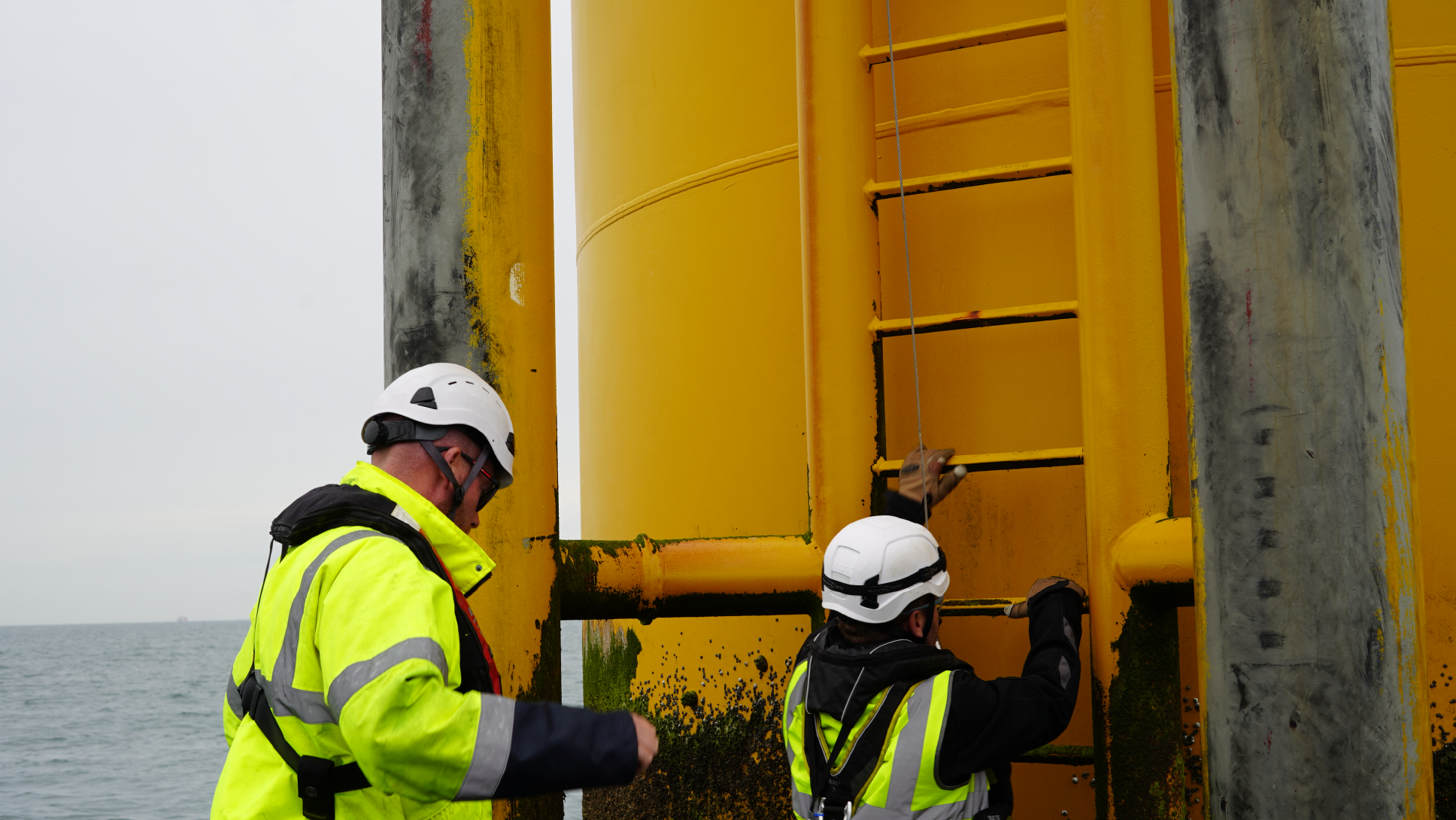- Member's menu
-
 Close
Close - Home
- About pensions

- Your Nest pension

- Investing your pension

- Retirement

- Support

- Member's menu
-
 Close
Close - Overview
- Take our three-step pension check
- What kind of retirement do you want?
- Calculate your retirement income
- How much should I save for my pension?
- How to grow your pension
- The advantage of saving early
- Why it's never too late to save
- How lifestyle changes affect your savings
- Member's menu
-
 Close
Close
- Support

- Help centre
- Contact us
Join our Social Media Manager on a visit to Lincs wind farm
Even though I’ve worked in the pension industry for the last few years, I’ve never really given much thought to where my pension was invested – shocking I know!
I, like so many others, have a workplace pension and you wouldn’t be surprised to learn it’s with Nest. But, along with some other Nest members, I was given a chance to see exactly where that money goes. I was excited to have the opportunity to visit Lincs wind farm and get to see my pension in action.
The trip out to the wind farm was run in collaboration with Octopus Energy and, as I’m also an Octopus Energy customer, not only did I get to see where some of my pension goes, but also how some of the energy that powers our homes is created too.

We were joined by three Nest members. Steve, Helen and Pete are all from the Grimsby area. Pete works at the fish market on Grimsby Dock. Helen works for XceCo, the company that used to run the day-to-day logistics of Lincs wind farm. And Steve works for Grimsby Community Energy, a cooperative that develops renewable energy projects. We all met up, bright and early, at Grimsby Dock, raring to go.
All-aboard
After a safety briefing, we boarded the boat. As we were leaving the dock, we travelled past the fish market and Pete showed us where he works each day.
The journey out to the wind farm took around an hour and a half. Luckily none of us were seasick! The time passed relatively quickly as we heard from Cliff, a wind farm engineer, who told us a bit more about the wind farm.

Hearing from Cliff
Lincs wind farm was built in 2013. It’s comprised of 75 turbines, each 145 metres tall, spanning over 5000 football fields. I was surprised to learn that just one spin of all the turbines at Lincs wind farm produces enough energy to power 15,000 homes.
Nest members are invested in projects, just like Lincs wind farm, all over Europe. It’s nice to know that our pension savings are having an impact in the UK, not just powering homes, but also creating jobs in the local area. Lincs wind farm is operated and maintained from Grimsby, meaning that over 350 jobs have been created in the area since the wind farm was built.
We made it
When we finally arrived at the wind farm, we docked right underneath one of the turbines. It was amazing! Being underneath the turbine was my favourite part of the day.
The question most of my friends asked me when I told them I went out to an offshore wind farm was ‘wasn’t it really noisy?’. But it wasn’t! I was surprised at how quiet the turbines were.
We also visited the offshore substation. This is the bit that collects all the energy generated by the turbines, it then converts the electricity to a higher voltage so that less energy is lost on it’s journey to the shore. This electricity is then sent through export cables to the onshore substation that connects the electricity supplied from the offshore wind farm to the national grid.

Back on dry land
When we got back we had the chance to interview Alex Brierley, co-head of Octopus' fund management team. He told us about how the wind farm, and other wind farms in the area like Hornsea One, which Nest members are also invested in, have a positive impact on the local area.
Hearing all of the interesting facts about the wind farm made me really appreciate where I work even more. Not just because I get to visit places like Lincs wind farm, but because it feels good to work for an organisation that places responsible investment at the heart of everything they do. I wasn’t the only one, the local members who came were just as impressed. See their reactions for yourself.
I hope other Nest members are as excited as I am to know that their money is invested in a way that will grow their pension pot while also contributing to UK communities and the transition to net zero.
Published 2 October 2023






